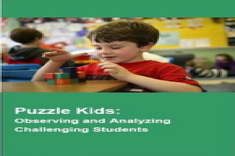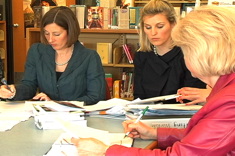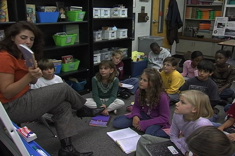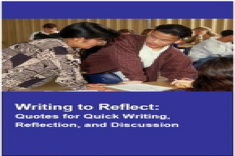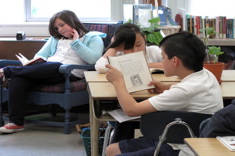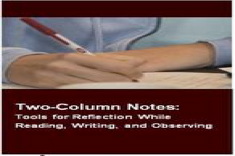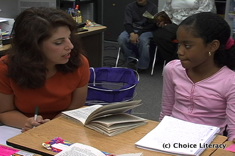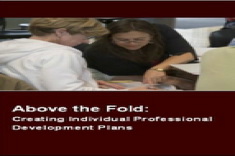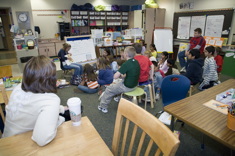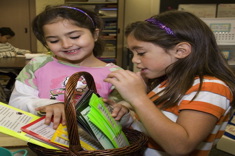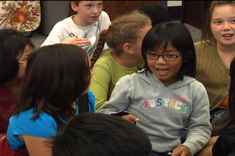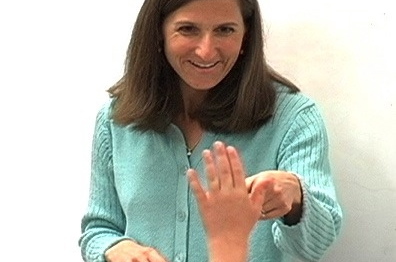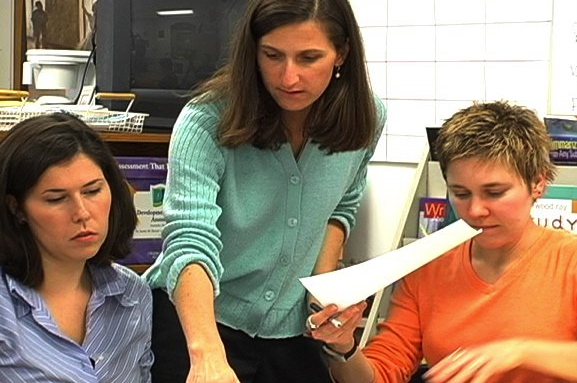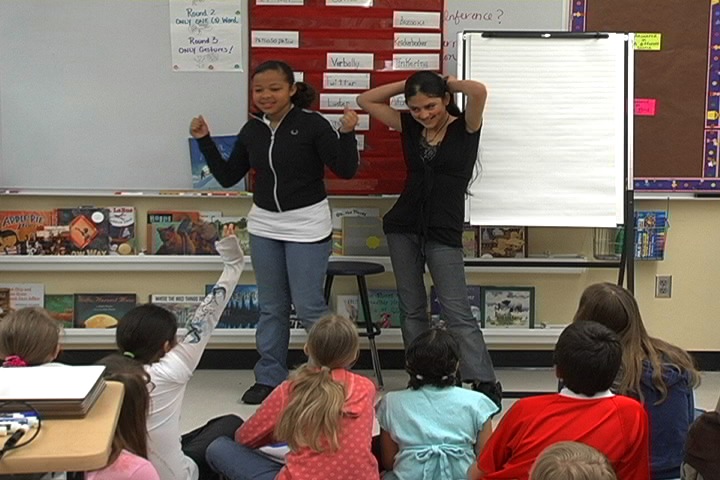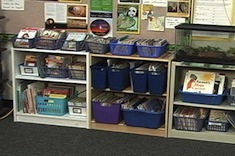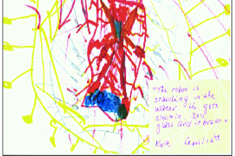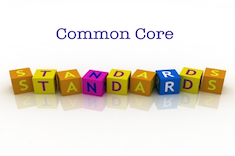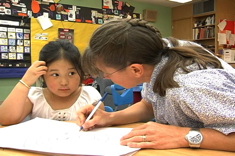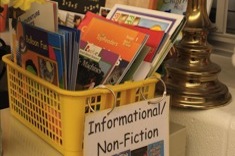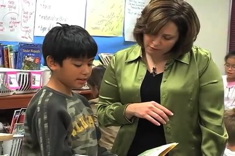Articles
Here is where you’ll find all the latest print features from our contributors. If you’d like to browse specifically by grade level, topic, or contributor, you can use the links in the right sidebar.
Latest Content
The Dark Side of Girl Talk: How Female Conversation Patterns Can Inhibit School Change
Brenda Power explores the differences between “rapport talk” and “report talk” and what to do when communication breaks down with female colleagues.
Puzzle Kids: Observing and Analyzing Challenging Students (E-GUIDE)
This E-Guide provides teachers with a tool to analyze children who need additional observation and analysis to create successful learning opportunities.
Conferring with Yourself: A Tool for Anticipating Response (TEMPLATE)
Take time for this quick write and Brenda Power will have you conferring with yourself, considering new viewpoints and thoughtfully preparing for your "yeah but" colleagues.
Launching Teacher Study Groups: Guidelines and Resources
Jennifer Allen’s years of experience with teacher study groups has led her to best practices that make it “safe and easy” for teachers to learn from each other.
Comprehending Graphic Novels: A Primer for Teachers
Mary Lee Hahn provides a quick primer for teachers new to graphic novels, as well as suggestions for using these novels to teach comprehension.
Guilty Pleasures
Aimee Buckner reveals her guilty pleasures, and finds they make for great writing fodder.
Writing to Reflect: Quotes for Quick Writing, Reflection, and Discussion (Download)
This downloadable guide includes 10 different quotes from a range of educators, activists, authors, and innovators for reflection at all times of the year.
What Are the Seven Reading Comprehension Strategies?
Terms like thinking or comprehension strategies get thrown around a lot, but what do we really mean? Brenda Power helps define seven strategies to build common language and understanding.
Two-Column Notes (E-GUIDE)
The Two-Column Notes eGuide has 18 different options for notes in professional development settings. These templates are helpful to use in staff meetings and study groups while watching videos, or to focus observations during classroom visits
The Read-Around: Raising Writers
If there was a centerpiece to teaching writing that also brought students closer together, wouldn't you want to know about it? Read on about the Read-Around.
Getting Started with Your Own Writer’s Notebook
Notebook Faker Extraordinaire Aimee Bucker writes about how she managed after years of false starts to build the writer's notebook habit one summer not long ago.
The Dog Ate My Study Group Plans! Four Instant (and Fun and Reflective) No-Prep Teacher Workshops (E-GUIDE)
This e-guide provides tried-and-true workshops plans for educators in need of energy and encouragement.
Above the Fold: Creating Individual Professional Development Plans (E-GUIDE)
Determine importance for yourself using a six-step process that individualizes a plan to help you set limits, study deeply and lead the scholarly life you deserve.
We Are All Shamu: What Literacy Leaders Can Learn from Exotic Animal Trainers
If you've ever compared your classroom to a zoo, this article by Brenda Power is for you. You'll take animal trainer advice like "We change behavior in others by breaking routines in delightful ways" and follow it into the classroom.
Poetry Friday! Poetry Books That Are Fun to Read Aloud
What do doughnuts and talk-filled mornings have in common? Learn about this Poetry Friday ritual that impacts independent reading time as well.
Under, Over and Beyond Words: Strategies for Observing Talk in Classrooms
This article offers possibilities for observing classrooms focused on talk as an alternative to traditional observation notes.
Inviting Students to Organize Books and Materials
Debbie Miller advocates for involving children in the organization of materials for readers and writers in the classroom.
Charting the Course: A Yearlong Professional Development Plan for New Teachers (SCHEDULE)
Planning with the end in mind is essential for literacy leaders. Jennifer Allen takes us through her process for creating a focused and progressive year-long plan.
The Other Buddy: How Partnership Programs Help Older Readers
In many buddy reading programs we often tout the benefits for the younger, less experienced reader, but Shari Frost tells the story of a “big kid” reader with a legitimate reason to read books that were closer to his independent level. Read on.
Idealism Fades to Reality: Thinking Back to My Days as a New Teacher
Jennifer Allen makes connections between her new professional life as a literacy coach and her beginning as a classroom teacher.
Layered Support: Meeting the Needs of Beginning Teachers
Jennifer Allen reflects on essential layers that provide a safety net for the challenges facing beginning teachers.
Digging Deep: The Power of Rereading
Max Brand considers how rereading helps students understand and enjoy texts.
Let’s Get Some Attitude
Shirl McPhillips recalls a junior high experience that promoted serious "attitude" and an uproar among her peers.
Power Tools
Aimee Buckner shares three essential "power tools" for writers.
Coaching Moment: Reorganizing a Classroom Library
Gayle Gentry reflects on how a colleague’s simple request to reorganize a classroom library turned into coaching opportunities that had a direct impact on student learning.
Tracking Young Children’s Writing and Development
Andie Cunningham and Ruth Shagoury share the assessment tools they use to track Andie’s kindergarten writers.
Common Core Conversations: Increasing Argumentative Writing
Teachers continue to puzzle over and sort through the terminology in the Common Core related to opinion and persuasive writing. Amanda Adrian and Heather Rader consider terms and teaching strategies.
The Difference Between Conferring and “Touching Base”
Debbie Miller goes against the grain, advocating for “the luscious feeling of endless time” as we slow down to confer with children.
“I Am the Book”: Helping Emergent Bilingual Learners Connect with Books
Jesabel Centeno helps her emergent bilingual learners respond orally to texts and share favorite books with classmates.
Whole Class Interviews: Building Community in Writing Workshop (TEMPLATE)
Interviews early in the year are a potent tool for building a class community.
Browse Content By
Type
Category
- Assessment Tools
- Big Fresh Archives
- Booklists
- Choice Numeracy
- Classroom Design
- Common Core
- Community Building
- Conferring
- Content Literacy
- Digital Literacy
- English Language Learners
- Equity
- Family Relations
- Free Samples
- Guiding Groups
- Leadership
- Literacy Coaches
- Mentor Texts
- Minilessons
- New Teacher Mentors
- Podcasts
- Poetry
- Quote Collections
- Reading Strategies
- Self Care
- Struggling and Striving Learners
- Talking and Listening
- Teacher Study Groups
- Teaching Reading
- Teaching Writing
- Word Study and Vocabulary
Author
- Melissa Quimby
- Nawal Qarooni
- Gwen Blumberg
- Julie Cox
- The Lead Learners
- Hannah Tills
- Josie Stewart
- Ruth Metcalfe
- Mallory Messenger
- Becca Burk
- Jodie Bailey
- Vivian Chen
- Mary Brower
- Tiffany Abbott Fuller
- Stephanie Affinito
- Ruth Ayres
- Leigh Anne Eck
- Heather Fisher
- Shari Frost
- Julie Johnson
- Suzy Kaback
- Gigi McAllister
- Shirl McPhillips
- Melanie Meehan
- Cathy Mere
- Debbie Miller
- Tara Barnett and Kate Mills
- Tammy Mulligan
- Dana Murphy
- Bitsy Parks
- David Pittman
- Brenda Power
- Heather Rader
- Matt Renwick
- Mandy Robek
- Christy Rush-Levine
- Gretchen Schroeder
- Jen Schwanke
- Brian Sepe
- Katherine Sokolowski
- Stella Villalba
- Jennifer Vincent
Grade Level
Choice Literacy Membership
Articles
Get full access to all Choice Literacy article content
Videos
Get full access to all Choice Literacy video content
Courses
Access Choice Literacy course curriculum and training


